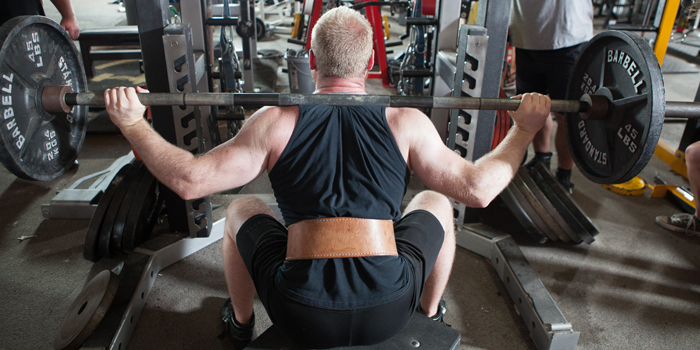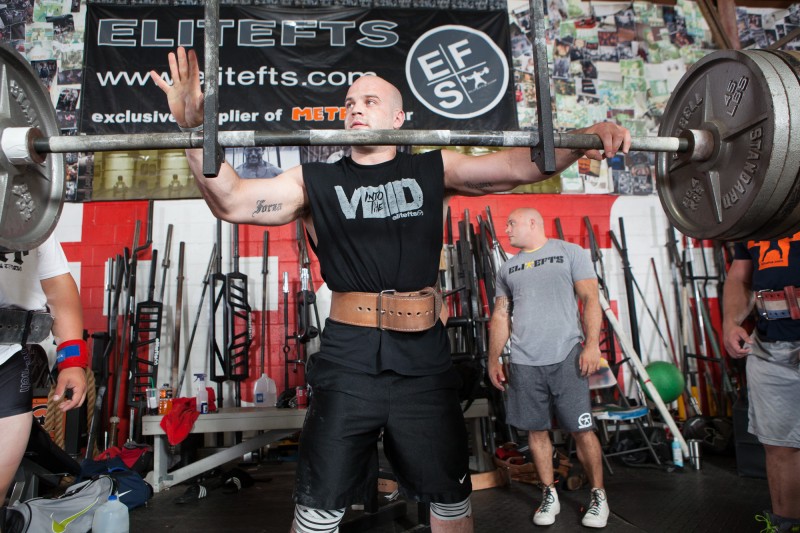
“I didn’t invent toilet paper, but I’m smart enough to use it.” — Louie
“Lift heavy every day” is the last thing you want to do with your training. Of course, the max effort method (ME) is the best method of training we have available to us, but too much of the ME method will cause you to go backward with your progress. Just to be clear, I’m specifically referring to one-rep maxes (1RM). Anything greater than a 1RM becomes more strength-endurance than maximal strength. Of course, multiple-rep maxes have their place in certain programs, but if your overall goal is to increase maximal strength, then this style of training should be limited.
Let’s address some of the traits of the max effort (ME) method:
- Strength-speed work is low velocity and will not facilitate the rate of force development (RFD). Bar deceleration is inevitable with loads higher than 90% of a person’s one-rep max.
- Neurological improvements from both a central perspective as well as a movement pattern prospective (intra- versus inter-muscular firing).
- Intensity is 100% (or more) of maximum.
- Volume is intended to be low (typically 60% or less of our dynamic effort work).
- It can lead to accommodation if variations are not rotated weekly or done same variations too often.
- It must be separated from dynamic effort work by at least 72 hours.
- It is incredibly safe when used with athletes that already demonstrate proper movement patterns.
- Follow Prilepin's chart performing no more than an optimal number of four repetitions with loads that exceed 90%.
Now let’s compare the dynamic effort (DE) method:
- Speed-strength work is intermediate velocity using loads of 75% to 85% of a person’s one-rep max (1RM).
- It utilizes high-threshold motor units and facilitates RFD.
- It can be used as a teaching tool for those that do not present efficient movement patterns because we are using sub-maximal loads with the focus on movement efficiency.
- Volume is high with a moderate intensity.
- Accommodating resistance is recommended to ensure we have proper loading throughout full range of motion (ROM)
- It must be separated from ME work by at least 72 hours.
- It is incredibly safe for all levels and can help athletes with higher concentrations of Type I muscle fiber (slow twitch) to develop Type II muscle fiber (fast twitch), which later translates to other aspects of fitness.
- Follow Prilepin's chart performing the optimal number of repetitions with loads ranging from 50% to 60% of 1RM using 25% of accommodating resistance with either band tension or chains.
As you can see, there is a balance between the two methods, both with unique and similar characteristics.
How does this apply to athletes that just want to look and feel better? As we know, we only have a limited amount of time with our clients on a weekly basis, making the need for an efficient training session paramount. If we are only utilizing one method (most gyms utilize some form of the max effort method, but fail to utilize the dynamic effort method) then we are selling our clients’ progress short, even if the goal is to only look and feel better. Both modes of training illicit a different hormonal responses that can aid in fat loss and post-exercise oxygen consumption (EPOC), which can elevate one’s basal metabolic rate for 12 to 24 hours prior to exercise. We are also ensuring that our clients are not being put at risk of overtraining because the training is diverse. The moral of the story is that this type of training does not just apply to powerlifters or competitive athletes; it also is beneficial to athletes of all abilities and goals.
WATCH: Table Talk — Max Effort Work vs. Submaximal Doubles and Triples
Another important consideration is the ability to properly blend strength-work with conditioning work in a group setting. Many coaches believe this approach is not possible (at one point I was one of them). I’m here to tell you it is, and it can be quite effective if done correctly. For instance, if we plan to have our athletes perform a conditioning piece that involves some heavier hip-dominant movement like a kettlebell swing or deadlift, yet we have our athletes perform a 5RM deadlift where volume is particularly high prior to, do you think their ability to be efficient during the conditioning piece will be compromised? The answer should be yes.
On the other hand, if we perform a different movement pattern like a knee-dominant front squat for a 1RM where the volume is significantly lower than a 5RM deadlift, do you think their ability will be hampered? I doubt it. Actually, in most cases, assuming their warm-up sets were done correctly, their ability should be enhanced due to the simple fact their central nervous system has been primed and primary movers are potentiated. As another example using the dynamic effort method, do you think if we performed 12 doubles with the box squat at 50% to 60% of our client’s 1RM, followed by some form of jumping, that it would compromise their performance in a moderate intensity conditioning piece, even if the movement patterns are similar? Probably not. These methods have been used with our clients all over the world, as well as our first-hand clients, with great success. In short, when our objective in using the ME and DE methods is to minimize guesswork with program design, we enhance our ability to ensure our classes are efficient.
The overall message here is that our programming needs to be diverse. Sticking to only one method is like trying to build a house only with a hammer and a box of nails. Using all of the tools available to us allows us to ensure our client's training is dense but well rounded, with the overall intent of keeping our clients healthy and allowing them to become better versions of themselves.
Jason is a Certified Strength and Conditioning Specialist and has been coaching athletes from all walks of life for over 12 years. Jason is a former gym-owner and now owns Box Programming, a service that provides programming to box programming Affiliates, as well as strength and conditioning facilities that serve the general population all over the world. Jason is a combat veteran.











The % of 1RM is quite different between 75-85% and 50-60%. Shouldn't DE be down in the 50's and 60's for optimal acceleration and volume? For instance, Prilepin's chart has you doing 3-6 reps for an optimal amount of 24 reps in the range of 55-65%. Something along the lines of maybe 5x5 or 8x3? Just trying to get clarification on this not to nitpick.
Thanks.
Brad
Thanks for reading! So a three week wave would look like this:
Week 1: 8 x 3 @50% + 25% of Band Tension or Chain
Week 2: 8 x 3 @55% + 25% of Band Tension or Chain
Week 3: 6 x 3 @60% + 25% of Band Tension or Chain
Of course, you could vary these rep schemes quite a bit i.e. 12 x 2, 5 x 5, 6 x 4. You're using 25% (that makes up the difference in %) of your max in Accomodating Resistance. That ensures properly bar velocity compared to just using straight weight.
Does that make sense?